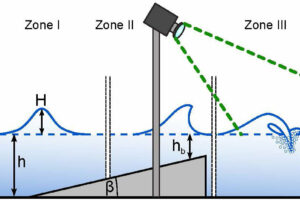Climate change caused largely by greenhouse gas emissions is hastening the transition from fossil fuel to a green economy, and decarbonization plays an important role in that process.
Decarbonization, the reduction of carbon dioxide emissions through the use of low-carbon power sources achieving a lower output of greenhouse gasses into the atmosphere, is integral to the City’s recently updated Climate Action Plan addressing global warming and climate change.
Last August, the City Council voted 8-0 to update San Diego’s Climate Action Plan, the goal of which is to achieve 100% renewable energy by 2030 and net zero emissions by 2035. One hundred percent renewable energy means getting all energy from renewable resources – sunlight, wind, rain, tides, waves, and geothermal heat – to be used for electricity, heating, cooling, and transport.
A low-carbon or decarbonized economy is one based on energy sources that produce low levels of greenhouse gas emissions from heat-trapping elements like carbon dioxide from car exhaust and methane from a variety of sources including landfills, oil, and natural gas, agricultural activities, and coal mining.
San Diego has joined the rest of the nation and world in shifting away from dependence on oil, natural gas, and other fossil fuels to the accelerated use of renewable energy. The ultimate goal of a green economy is to achieve net zero emissions, bringing global greenhouse gas emissions into balance with emissions reductions. Carbon dioxide emissions are still generated, but an equal amount of carbon dioxide is removed from the atmosphere, resulting in a zero increase.
San Diego’s updated Climate Action Plan now calls for eliminating nearly all natural gas use from buildings in the city by 2035. That entails eliminating natural gas hookups in all new construction, as well as slashing 90 percent of natural gas use in existing buildings, including residential along with commercial and industrial structures, within the city’s limits in the next 13 years.
Following is a Q&A conducted with the City’s Sustainability and Mobility Department, addressing what is being done to shift away from fossil fuels and toward a cleaner, greener, and more sustainable economy.
Beacon: Why is natural gas bad and polluting?
City: Natural gas combustion produces greenhouse gas emissions with many times more warming potency than carbon dioxide. Indoor use of natural gas significantly impacts the health of our residents, even when you can’t smell it. One study showed that health-damaging air pollutants such as nitrogen oxides (NOx) are released into homes and can trigger respiratory diseases like asthma in youth, older populations, and those with compromised lung and heart health. Another study suggests that up to 12% of childhood asthma rates in the U.S. are attributable to gas stoves. For more information, visit California Air Resources Board webpage.
Beacon: What will take the place of natural gas?
City: Cleaner, zero-emissions sources, and technologies are already replacing burning methane and other fossil fuels. High-efficiency electric heating, cooking, and hot water appliances are all available in the market today, including not only induction stoves but air fryers, toaster ovens, electric kettles, and microwaves. Electric appliances can immediately be powered by clean energy, such as rooftop solar or other on-site renewable energy generation.
The City’s partnership with San Diego Community Power, which already offers a 100% renewable electricity rate option, means that electricity will continue to get cleaner as more renewable energy sources are brought online and right to your home.
Beacon: Why is it important to decarbonize?
City: Natural gas is one of the largest sources of GHG emissions. Decarbonization of buildings in San Diego contributes 22% of the emissions reductions necessary to achieve the CAP goal of net zero by 2035. Removing natural gas from homes improves indoor air quality, leading to better health for our residents and families. This impact is especially acute for San Diegans in smaller or older homes where natural ventilation is difficult due to older windows or outdoor noise and smells.
A recent study found that children growing up in homes with gas stoves, even when you cannot smell them, have a 42% increased risk of developing asthma. Switching to electric stoves will eliminate invisible toxic pollutants that are released when not only burning natural gas in the home but at times when small amounts can seep out of appliance gas lines.
Beacon: Will decarbonization be costly?
City: We acknowledge that the cost of retrofitting existing buildings will be costly. Therefore, the City is actively working on programs, partnerships, and potential solutions to identify funding sources with our stakeholders. In terms of costs for residents, high-efficiency electric appliances, such as heat pumps, are “three to five times more energy efficient” than their gas counterparts, which can save money on energy bills.
Multiple studies have shown that newly constructed or retrofitted all-electric homes can significantly lower total utility bills. For new construction, the lifetime savings (upfront costs plus operating costs) can be between $130 and $540 per year. It will be necessary, though, to find ways to offset the initial cost for those appliances or systems as many residents and small businesses won’t be able to afford the upfront costs.
Additionally, the decarbonization efforts will directly impact many of our workers and laborers. It is essential to work with those groups to find ways to ‘green’ existing skills to ensure no worker is left behind. Partnering on training programs and new technologies is essential for the City to prioritize as we move forward with decarbonization.
Beacon: What does decarbonization involve?
City: Decarbonization, as laid out in Strategy 1 of San Diego’s landmark 2022 Climate Action Plan, is defined as the removal of carbon from a system, with a focus on the source with the greatest potential for reduction: natural gas or methane. Primarily, what this means is switching to more efficient electric appliances.
The decarbonization strategy has three components that will work toward electrification, with the first being our City municipal facilities, like recreation centers, fire stations, libraries, and offices. This will allow the City to learn from our own decarbonization efforts for better programs and practices that can be available to our residents and small businesses for a successful transition.
This is followed by new homes and commercial buildings via the adoption of the State Building Code and the City’s development of a Reach Code. Lastly, we are working on a decarbonization roadmap for retrofitting existing homes, businesses, and office buildings. We are committed to working with industry representatives and labor groups along with community members to craft the most practical policy possible that allows us to achieve our goals and improve our quality of life.
Beacon: Will there be incentives in the City’s updated Climate Action Plan to encourage businesses/people to convert to green technology?
City: The City plays an important role in ensuring the market for electric building technologies transforms in adequate time to achieve the GHG emissions reductions identified in Strategy 1 of the Climate Action Plan. It is critical for the City to advocate for and promote direct incentives and economies of scale for resources up and down the supply chain, from manufacturers and distributors to building owners and renters.
City staff has already begun a robust building stock analysis exercise to ensure any future policies for decarbonization reflect the best possible outcomes from San Diego. Information gathered through this exercise and others will well position the City to identify and apply for external funding opportunities that may arise from the federal government or otherwise.
Beacon: How is the City going to ensure that the timetable for eliminating natural gas and decarbonizing is met?
City: Work has already begun on our City municipal facilities through the passage of our ambitious Zero Emissions Municipal Buildings Operations Policy and Municipal Energy Implementation Policy last fall. The next step is to draft a Reach Code that will build upon the California state building code to require new developments in the City to build all-electric. This is already being done in many projects given the cost of natural gas and the long-term cost savings that can come with all-electric home or office construction.
Later this year, the City will work with stakeholders to determine policies for existing buildings by developing a decarbonization roadmap. Together, these actions will account for a significant portion of the GHG reductions necessary to reach our goals by 2035, and the City will continue to report on its progress annually until the Climate Action Plan is updated in 2027.
Beacon: Will there be any penalties if those decarbonization goals are not met?
City: It’s important to note that there are no immediate proposals to require residents or property owners to remove existing natural gas appliances like stoves or hot water heaters. The only current requirement is one the City has set for itself to transition its own facilities to net zero by 2035. Currently, any new construction only has to be in compliance with the current 2022 state building codes. The next most immediate policy under discussion could require new construction to go further to build all-electric if a Reach Code is adopted.
Policies and programs for existing buildings are steps to be taken in the future after a roadmap is developed in partnership with relevant stakeholders in late 2023. At this time, existing programs are incentive-based and opportunistic, rather than based on penalties and fines.
Beacon: Does the City have a plan for educating the public on the need for decarbonizing and going green?
City: The City is committed to working with all stakeholders – including residents, workers, and industry – to develop thoughtful ways to decarbonize our built environment while prioritizing the needs of underserved communities, quality green jobs, and a thriving local economy. A capacity-building exercise led by staff in partnership with the Institute for Local Governments is just wrapping up this month. Staff worked with four local community-based organizations to understand the impacts of a potential Reach Code on the communities they represent.
Furthermore, the draft language of the Reach Code will be made available to the public within the next month. At that time, public comments will be welcomed through community engagement and public hearings.
Once the new construction Reach Code is in place, the City will transition its focus to addressing existing buildings. We anticipate kicking off the decarbonization roadmap in late 2023. The roadmap effort will include gathering extensive stakeholder input to help us determine policies and programs to support residents and businesses for existing buildings.
Beacon: Is decarbonization something being done state and nationwide?
City: Yes, there is a trend toward electrification globally. In fact, the federal government recently set an ambitious goal for their own buildings to be fully decarbonized by 2030 (Biden-Harris Administration Announces Steps to Electrify and Cut Emissions from Federal Buildings | Department of Energy). In California, more than 40 jurisdictions have passed gas-free building commitments or electrification building codes (Zero Emission Building Ordinances – Building Decarbonization Coalition), which makes sense considering California’s ambitious climate action goals as outlined by the California Air Resources Board.
The state’s plan aims to ‘build out a 100% clean-energy grid, achieve carbon neutrality by 2045, ramp up carbon removal and sequestration, protect Californians from harmful oil drilling, and invest $54 billion to forge an oil-free future while building sustainable communities throughout the state. (California Releases World’s First Plan to Achieve Net Zero Carbon Pollution).
In partnership with the California Building Code, electrification reach codes, and energy programs, local jurisdictions can support these statewide goals to create new climate-friendly homes.
Source: SD News











Add Comment